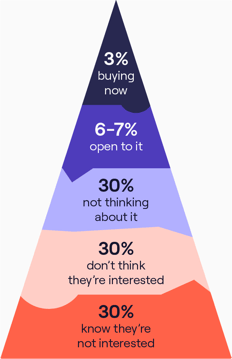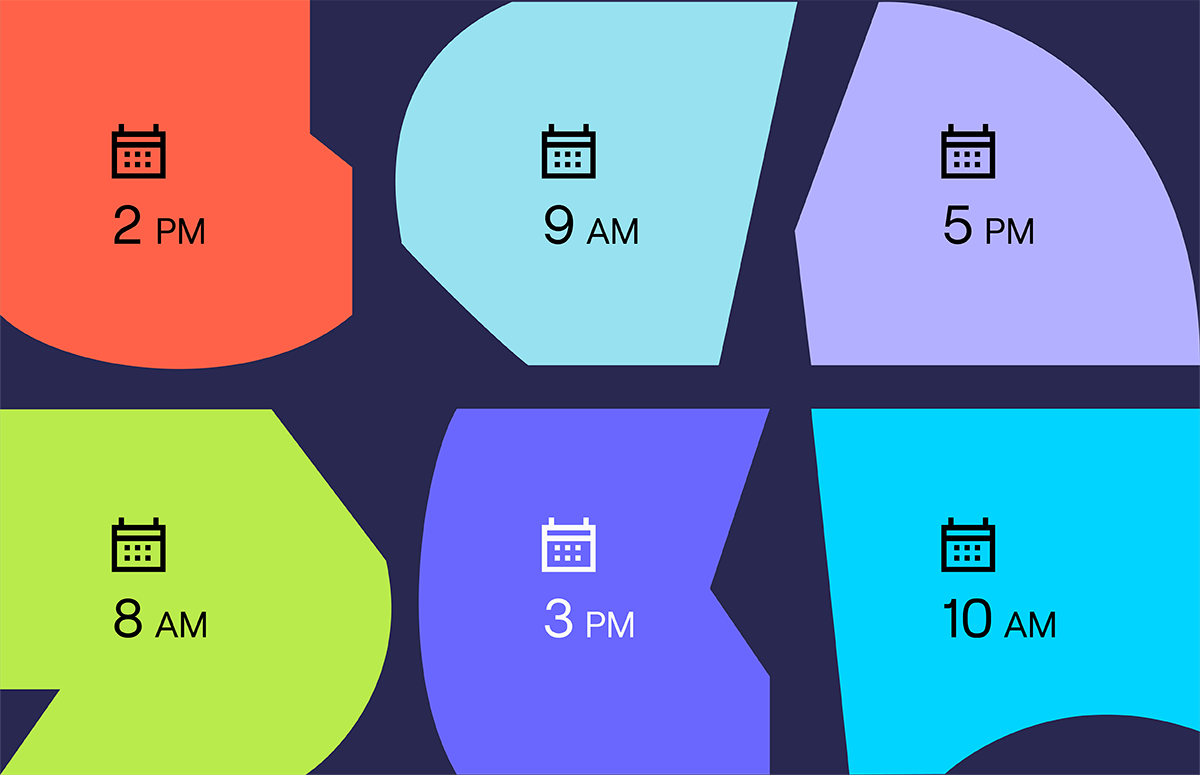SDR Personal Branding: Tips to Build Your Brand in 2024
SDR personal branding is a hot topic discussed on LinkedIn. And for good reason!
Social media is a fantastic channel for salespeople to utilise. It has many benefits for SDRs. It lets them:
- Converse with a B2B target audience.
- Share relevant content with warm prospects.
- Use their professional experience to help decision-makers who are in-market for a product/service.
And if anyone understands the power of building a personal brand as a salesperson, it’s Morgan Ingram.
Want his expert insights on developing an effective personal brand that benefits your work as an SDR?
Keep reading! 👇
What is a personal brand?
Building an SDR personal brand is like building a company brand.
It’s establishing yourself with a recognisable identity. Positioning yourself in front of a target audience and then promoting your values, expertise and interests.
The term ‘personal brand’ might have some negative connotations. As if somehow the ‘brand’ is an illusion to manipulate behaviour. But in a B2B context, a personal brand is a way of being a recognised expert in a specific subject.
Liam Bartholomew, VP of Marketing at Cognism, says:
“Building a personal brand gives you another organic channel to meet your audience where they are. It’s pretty much becoming a B2B influencer.”
Morgan adds:
“Whether you’re consciously building a brand or not, you have a reputation. So you may as well take ownership over making it a positive one.”
Think of your SDR personal brand as how you might want someone to describe you after you’ve left a room.
For example:
If you don’t have a personal brand, well, they’re not going to have much to say about you.
‘Not sure who that guy was…’
But if you post regularly about SaaS sales or the latest tech in B2B, people might say:
‘That’s the person always sharing cool new tools and platforms. If you want to know how to get your SDR tech stack right, this is the guy to follow.’
Why is this important?
As an SDR, you can treat your social media followers as a nurture bucket.
Look at Chet Holmes’ Buyers’ Pyramid; only 3% of your audience is ready to buy at any given time.
This means a large portion of your target audience is either:
- Unaware they have a problem you can solve.
- Or they’re open to buying but don’t know what to commit to yet.

That’s a solid 40% remaining where you can influence a decision.
Now, we aren’t suggesting that you should ditch the cold outreach for personal branding. Cold calling your prospects will still get you the best results.
But the best way to compound your results is to build awareness around the problem you solve. And then position yourself as an expert in that subject area.
Want to hear more about Chet Holmes’ Buyers Pyramid? Watch Ryan Reisert’s explanation of it here!
Gauri Manglik, CEO and Co-Founder of Instrumentl, suggests that customers are more empowered than ever.
“Sales leaders should be preparing for a future where every single customer is empowered to make buying decisions on their own terms.”
The landscape of B2B sales is changing. That’s one reason why SDR personal branding has become an important topic.
Customers are more independent. They used to need to speak to salespeople, but now they do a lot of their research online, on their own.
Sales professionals need to adapt to these digitally-literate target prospects. It’s about providing them with the information they need to decide in a more ‘self-serve’ way.
The benefits of SDR personal branding
There are several benefits to having a personal brand in sales. Including:
- Helping you build trust and credibility with your target audience. Decision-makers might feel more comfortable increasing initial deal sizes, meaning there’s less need to ‘test the waters’.
- Making sales conversations easier. This can shorten sales cycles and increase sales velocity.
- Reaching and nurturing a wide audience at once.
- Building and strengthening your network. This can open doors for relationship selling.
- Driving demand generation efforts.
- Humanising you as a seller.
But that’s not all; Morgan adds another couple of key benefits to this impressive list!
He says:
“If you’re putting out content where your audience is - and they know who you are - you’re going to have less resistance if and when you’re prospecting.”
Think about it. If someone has seen your profile or content online, they might feel more comfortable talking to you on the phone.
There’s a big difference between that and, ‘who the heck are you and why are you calling me?’ You’re not someone unknown.
A big issue that salespeople deal with is the lack of trust that prospects have for cold callers. People might say, ‘They’re just trying to make money; they have an ulterior motive’.
But if you’ve been providing value and building trust and credibility, then those walls might start to come down.
Morgan adds:
“You give yourself a much better chance of a positive sales conversation. There’s nothing really to lose.”
“If you’re doing a good job helping people with selection online, you might even encourage some people to come inbound to you.”
It’s not unusual for a prospect to hop on LinkedIn to look you up after a cold call. Even if the person you’re calling hasn’t heard of you or seen your content beforehand.
People are sceptical of salespeople. So, having credible online content can help your cause, at least for those initial introductions.
Another benefit of SDR personal branding that Morgan highlights?
It increases your access to learning. He says:
“It gives you access to other people for information. If you’re an SDR, you can use your social media presence to talk to other more experienced sales leaders.”
“It’s an opportunity to speed up your learning and become better at your role.”
“Building a strong network online is really useful during times of recession, too. If a decision-maker you’ve been talking to gets laid off, you’ll still have other connections because of your strong network.”
Are there any downsides to SDR personal branding?
With anything in life, there are usually pros and cons. We’ve covered many of the pros, but now it’s time to consider some potential cons of SDR personal branding.
- It can be time-consuming.
- Branding can backfire - not everyone will like what you’re doing.
- It’s hard to measure.
Morgan explains:
“It can be a time-consuming activity if you don’t know what you’re doing.”
“You need to have some level of strategy to it. Using your voice to share who you are and what you’re about, rather than just reposting things.”
Ryan Reisert agrees that building a personal brand can have its uses but warns reps not to invest too much time in it:
“I do think that having a presence online can be helpful. If you’re sharing content online, then there’s a chance your target audience is following. This will help you to build trust and credibility.”
“However, this is only going to get you so far.”
Ryan believes that in times of recession, more and more people will want to be involved in B2B decisions. So, it’s unlikely your SDR personal brand will be what seals the deal.
It’s more likely to come down to the brand’s overall reputation rather than your SDR personal branding.
It’s also unlikely that decision-makers spend huge amounts of time scrolling on LinkedIn.
Ryan adds:
“It can be tempting to dedicate a lot of your time to posting online. [Especially] when everyone around you is talking about building their personal profile. But when push comes to shove, it won’t matter.”
“I’m not saying you should have zero presence, but don’t make it your number one focus.”
How to build a successful SDR brand
So, you’ve decided you’d like to build your online presence as an SDR. What do you do next?
Here are some of Morgan’s top tips!
1. Create content you’d like to engage with
Try not to regurgitate the same stuff all the time or the same that everyone else is posting.
If it bores you, then it will bore your followers!
Think about the content you’d like to see if you were your customer.
Some content might be more for entertainment value; others might be more educational. It’s even better if there’s a mix of the two.
For example, check out one of Morgan’s TikToks below!
@cognism CONGRATS! This is a cold call! How many of you have tried this intro? #sales #coldcalling #coldcallingtips ♬ original sound - Cognism
2. Find the right platform
You can’t just start building an SDR personal brand on whatever platform you like. Well, you could, but it won’t get you very far!
Instead, think about the platform(s) your target audience uses most.
Morgan says:
“You need to be speaking to your target audience; otherwise, it’s not going to help you as an SDR.”
Generally, in a B2B context, LinkedIn is the best candidate. But don’t forget, your prospects are people outside of work, too.
Where do they hang out and consume content outside of work? It’s a good idea to reach them there, too.
3. Become a curator
You don’t need to come up with original content by yourself all the time. To save yourself time while also providing value to others - become a curator!
What does that mean exactly?
For Morgan, it means reading blog posts/researching relevant content and then sharing them with your audience, along with your opinions, insights or learnings.
Morgan says:
“You don’t need to be in a studio with a mic creating in-depth videos. All you need to do is bring context to something you already know.”
4. Interact with your audience
Are people commenting on your posts? Reply!
Morgan says:
“The fastest way to build brand affinity is to have conversations with your audience.”
If someone has taken the time to engage with your post and left a comment, then don’t ignore it. Ask questions, share insights and spark friendly debates.
You might find other followers get involved in the chat, too!
Replying helps to create connections between you and your followers. The more interactions under a post, the more it signals to the platform that people are enjoying your content.
Most algorithms will favour and promote the posts that people are engaging with, pushing it out to even more people - win-win!
How do you know if your SDR branding is working?
As mentioned earlier, personal branding is a tricky thing to measure.
How do you know if people are receiving you? And how can you measure branding against your SDR objectives?
Well, you can do a few things to get some insight.
Self-reported attribution
Ask the people who turn into customers…
- How they found you.
- What influenced their decision to commit to a deal?
If you’re doing online branding well, some will answer it after seeing your content.
Feedback from your prospecting
You should also get an indication of when you’re reaching prospects.
- Are you finding your sales conversations getting easier?
- Do people know who you are when you call?
- Are you getting more inbound requests than before?
Feedback and inbound requests are good ways to track if your personal brand benefits your outbound sales.
And finally, with SDR personal branding, it’s also important to regularly check that your followers are the people you should be targeting.
If your personal brand isn’t capturing the prospects you need as an SDR, that’s a sign to change up your strategy.



